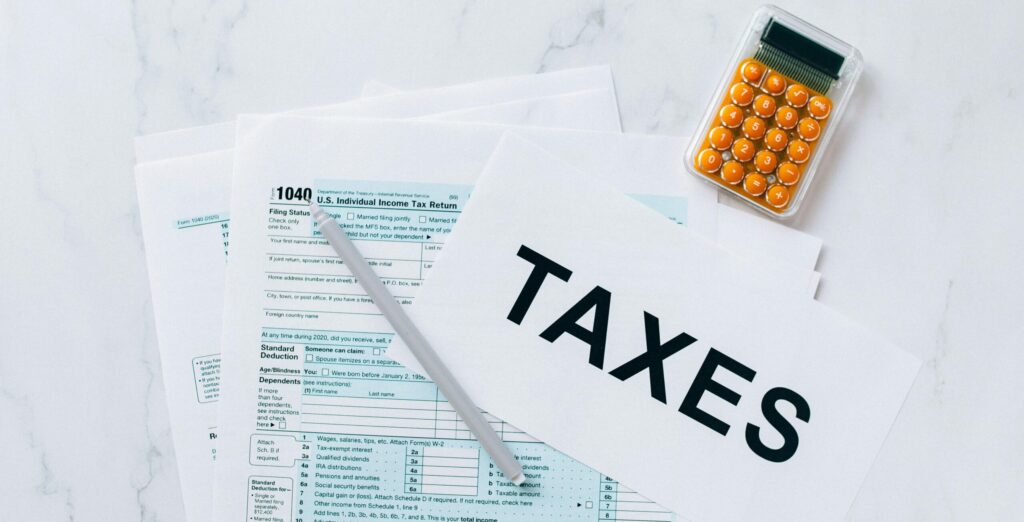The 2025 tax extension deadline is October 15, 2025. If you already filed for an extension back in April, you now have until October 15 to submit your completed return. However—and this is crucial—your tax payments were still due on April 15, 2025. Think of it this way: an extension gizves you more time to get your paperwork perfect, but the IRS wanted payment on the original deadline.
You want to make sure you’re prepared for some important changes this year. Interest rates dropped to 7% (good news!), but penalties increased due to inflation adjustments. The bottom line? It’s more important than ever to get your strategy right from the start.
What Is the Tax Deadline for 2025?
For most small business owners, personal tax returns were due April 15, 2025. If you filed Form 4868 by that date, you automatically received an extension until October 15, 2025 to submit your return. No questions asked, no approval needed—it’s automatic.
Here’s where it gets a bit more complex for business entities. If you have an S-corporation or partnership, your deadline comes earlier: March 17, 2025 (since March 15 falls on a weekend this year). The good news? You can extend until September 15, 2025 by filing Form 7004 on time. C-corporations follow the standard April 15 timeline.
The rule that applies to everyone: Extensions give you time to file, never time to pay. Your tax payments are due on the original deadline so plan to pay at least 90% of what you owe by April 15 to avoid underpayment penalties.
(Source: Internal Revenue Service)
What Changed This Year (And What It Means for You)
Good news first: Interest rates dropped to 7% for 2025, down from 8% last year. Every percentage point matters when you’re managing cash flow, so this is a welcome relief.
The reality check: Penalties went up due to inflation. The minimum late-filing penalty jumped to $525 (up from $510), and business penalties increased even more. S-corporations and partnerships now face $255 per owner per month for late filing. Yes, you read that right—per owner, per month.
Here’s what this means in real terms: If you have a three-partner business and file three months late, you’re looking at a $2,295 penalty before we even talk about interest. That’s money better spent growing your business, not paying penalties.
(Source: Taxes for Expats,Internal Revenue Service)
When Do You Have to Pay Taxes vs. File Taxes?
Let’s be crystal clear about this: Filing extensions and payment deadlines are completely separate things. You could extend your filing deadline, but your payment deadline was set in stone—April 15, 2025 (which has already passed).
Some business owners followed the 90% rule. If you paid at least 90% of what you owed by April 15, you avoided underpayment penalties entirely.
Even smarter? Follow the safe harbor rules. Pay 100% of last year’s tax liability (110% if your adjusted gross income was over $150,000), and you’re protected from underpayment penalties no matter what you actually owe this year. It’s like insurance for your tax strategy.
Payment methods that work for business owners: IRS Direct Pay (free), EFTPS (Electronic Federal Tax Payment System), or credit/debit cards (small processor fee applies). Electronic payments are faster, more secure, and give you immediate confirmation.
(Source: Sassetti LLC)
What If You Didn’t File an Extension OR Your Taxes by April 15?
If you missed both the April 15 filing deadline AND didn’t request an extension, you’re now facing penalties—but you still need to file as soon as possible to minimize the damage.
Here’s the math that matters: The failure-to-file penalty is 5% per month (up to 25%), while the failure-to-pay penalty is only 0.5% per month (also up to 25%). This means filing late costs you ten times more than paying late. Always file on time, even if you can’t pay the full amount.
Penalties you’re facing:
- Failure-to-file penalty: 5% of unpaid taxes for each month (or part of a month) your return is late, up to 25%
- Failure-to-pay penalty: 0.5% of unpaid taxes for each month your payment is late, up to 25%
- Interest: Currently 7% annually on both unpaid taxes and penalties
- Minimum late-filing penalty: $525 (up from $510 due to inflation)
For business owners, the stakes are higher: Those per-owner penalties we mentioned earlier? They’re not based on how much tax you owe—they apply whether your business owes $1 or $10,000. S-corporations and partnerships now face $255 per owner per month for late filing. A small partnership filing six months late could face over $4,500 in penalties regardless of the actual tax liability.
What you need to do now:
- File immediately – Don’t wait any longer. Each month of delay costs you 5% in penalties
- Pay what you can – Even a partial payment reduces the penalty calculation
- Use the same forms – You don’t need special “late filing” forms; use your regular tax forms
Consider penalty relief – First-time penalty abatement can save you if you’ve had a clean record for the past three years. The IRS will often remove penalties (though not interest) for taxpayers with good compliance history. It’s worth asking.
(Source: Tax Samaritan)
Tax Extension Rules for Different Business Types
Sole proprietors and single-member LLCs have it simplest—you follow the same rules as individual taxpayers. File Form 4868 by April 15 for an October 15 extension.
Partnerships and S-corporations your deadline was earlier: March 17, 2025 (since March 15 fell on a weekend this year). If you filed Form 7004 by that date, you have until September 15, 2025 to submit your return.
Multi-state businesses have an extra layer of complexity. While many states automatically honor federal extensions, some require separate state filings. Don’t assume—check your state’s specific requirements or ask your tax professional.
Cash flow tip: Remember that quarterly estimated payments continue regardless of any extensions. Your Q1 2025 payment is due April 15, the same day as your 2024 tax payment and extension request. Plan accordingly.
(Source: Carta)
Your Action Plan for Success
If you filed an extension: You have until October 15 to complete and submit your return. Use this time wisely—gather all necessary documents and ensure accuracy.
Get organized early: Whether you’re filing an extension or not, gather your documents now. Extensions buy you time to file, but they don’t buy you time to find lost receipts or track down missing 1099s.
Consider professional help: With penalty amounts increasing and the complexity of business tax rules, a qualified tax professional often pays for themselves. The peace of mind alone is worth it.
Keep good records: Document your extension filing and any payments made. If questions arise later, you’ll have the paper trail to back up your position.
If you missed both deadlines: File immediately to minimize penalties. Every day counts when you’re facing a 5% monthly penalty.
For next year: Mark April 15, 2026 on your calendar—not just as a filing deadline, but as a payment deadline. Start estimating what you’ll owe and set aside money throughout the year.
Takeaways
Tax extensions are a valuable tool when used correctly, but they’re not a free pass to ignore your obligations. The key is understanding that extensions give you time to file accurately, not time to pay what you owe.
As a small business owner It can be challenging to balance tax obligations with the day-to-day demands of running your business. The good news? With proper planning and the right strategy, you can navigate tax season successfully while keeping penalties and interest to a minimum.
Remember, when tax season feels overwhelming, focus on the fundamentals: if you filed an extension, complete your return by October 15; if you missed deadlines, file immediately to minimize penalties; and always keep good records throughout the year. For next year, plan to file on time (or extend properly) and pay what you owe by April 15, 2026. Your future self—and your business—will thank you
Want to get better organized for next tax season? Consider using Finli to streamline your invoicing, payment collection, and customer management—all the financial organization that makes tax time so much easier. Our comprehensive platform helps small businesses stay on top of their finances year-round, so you’re never scrambling for records when deadlines approach.
Please consult with a qualified tax professional for advice specific to your business situation.




